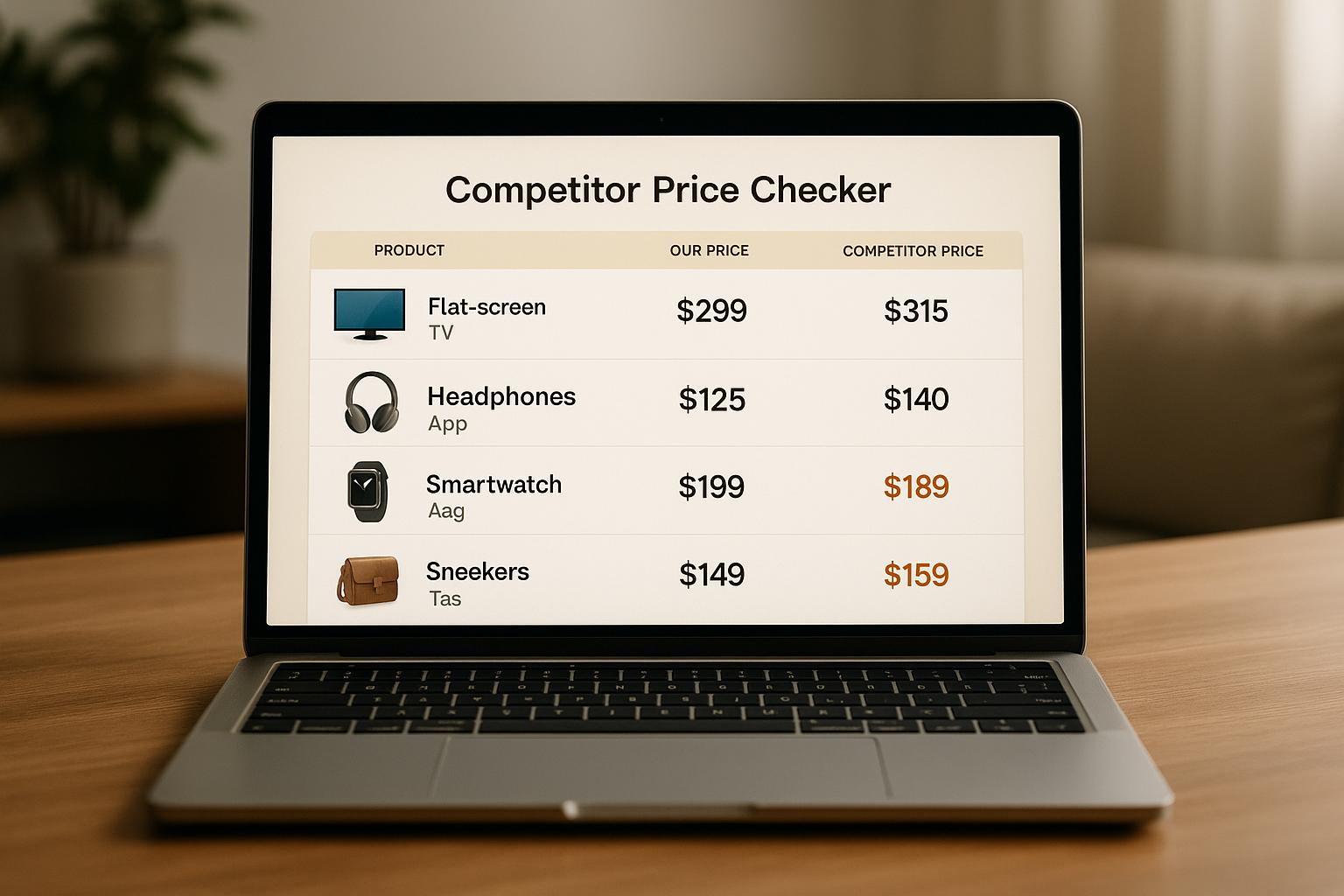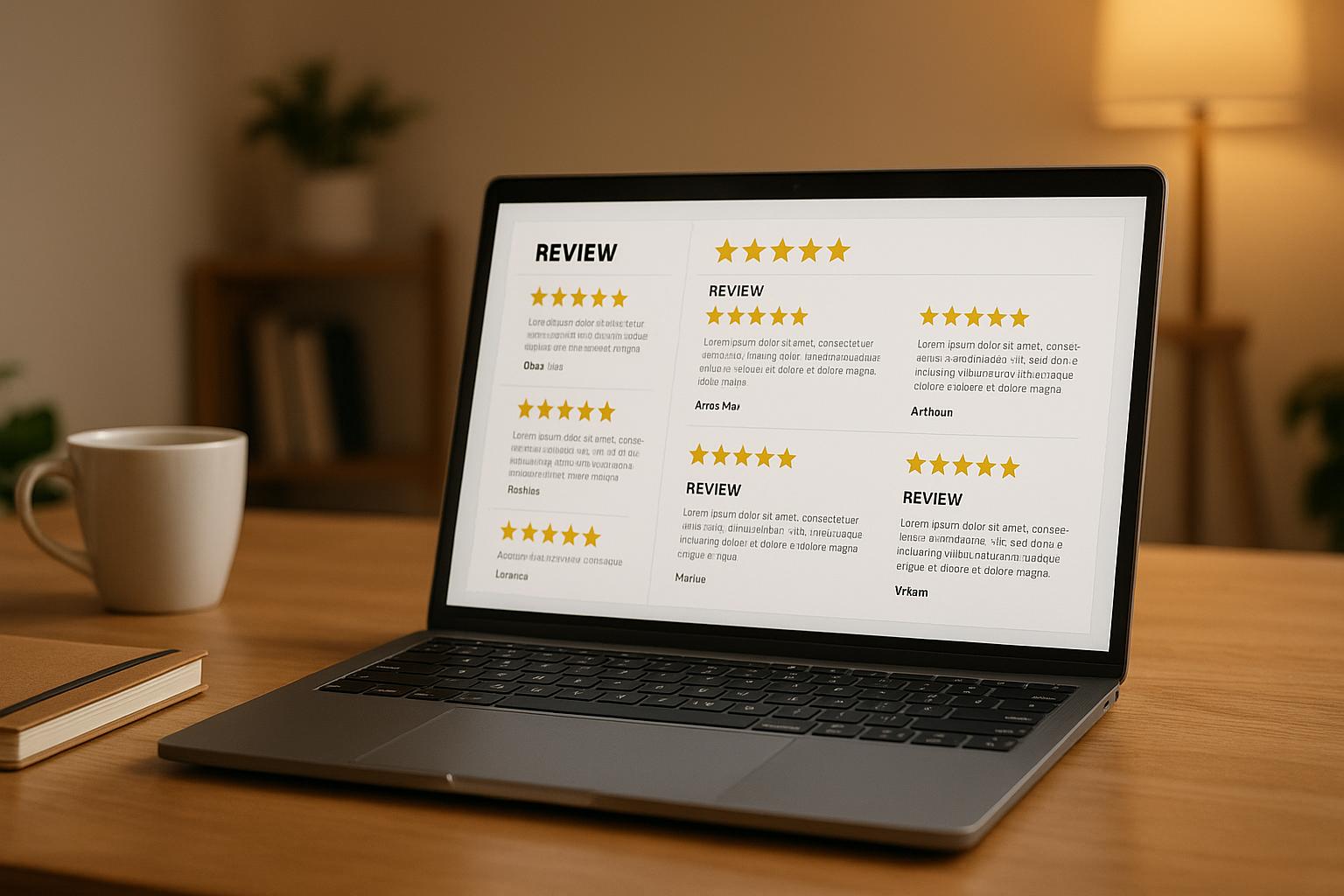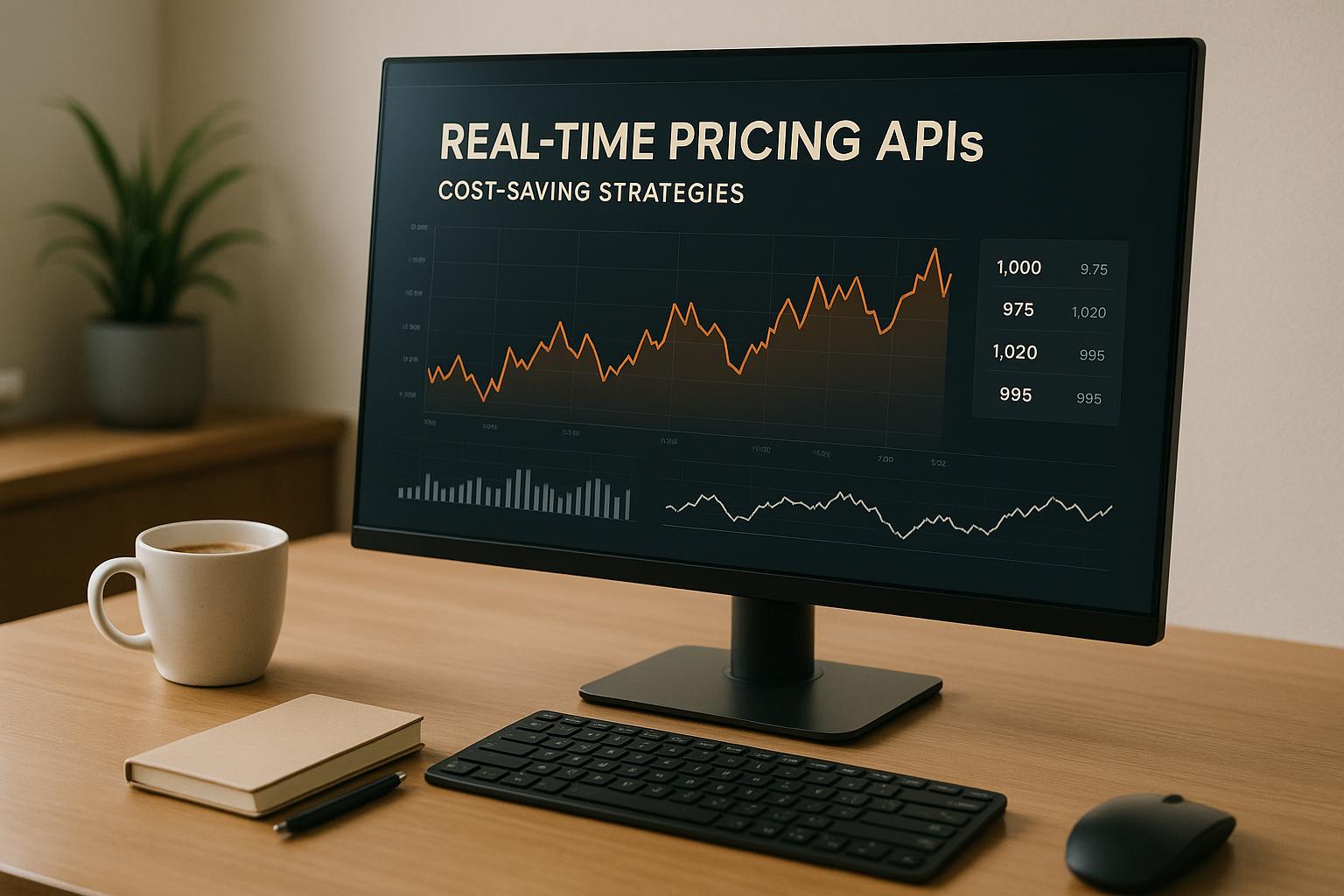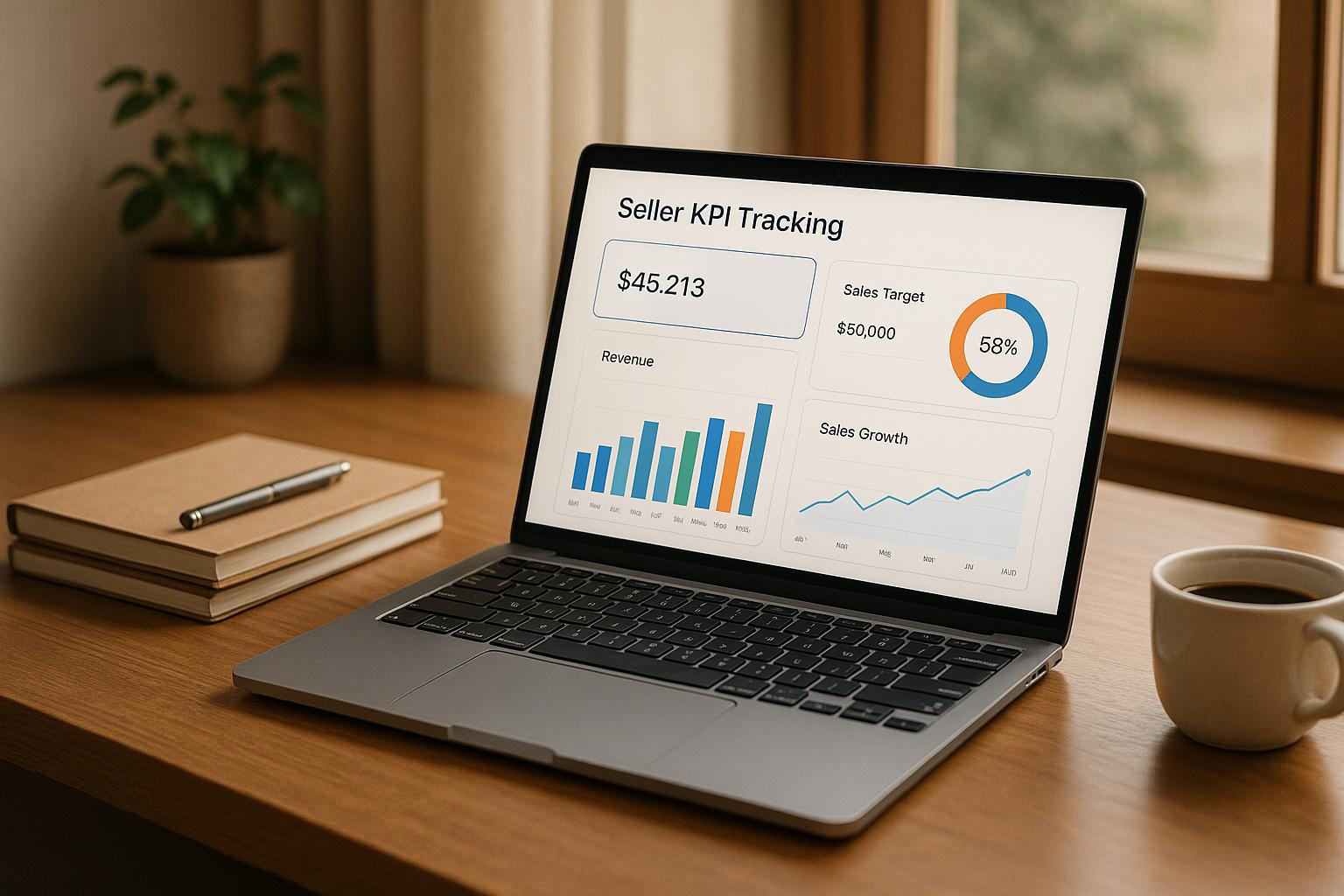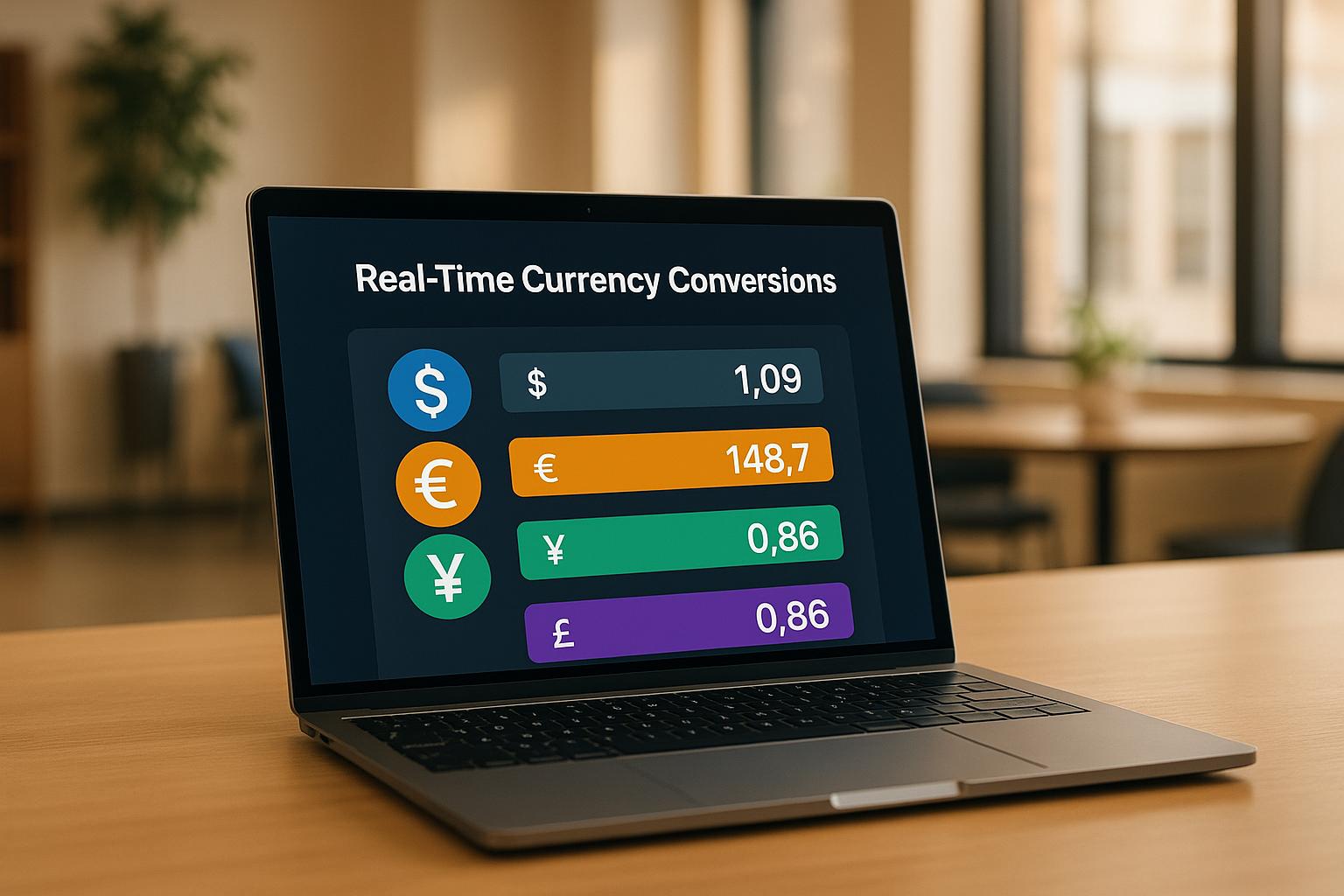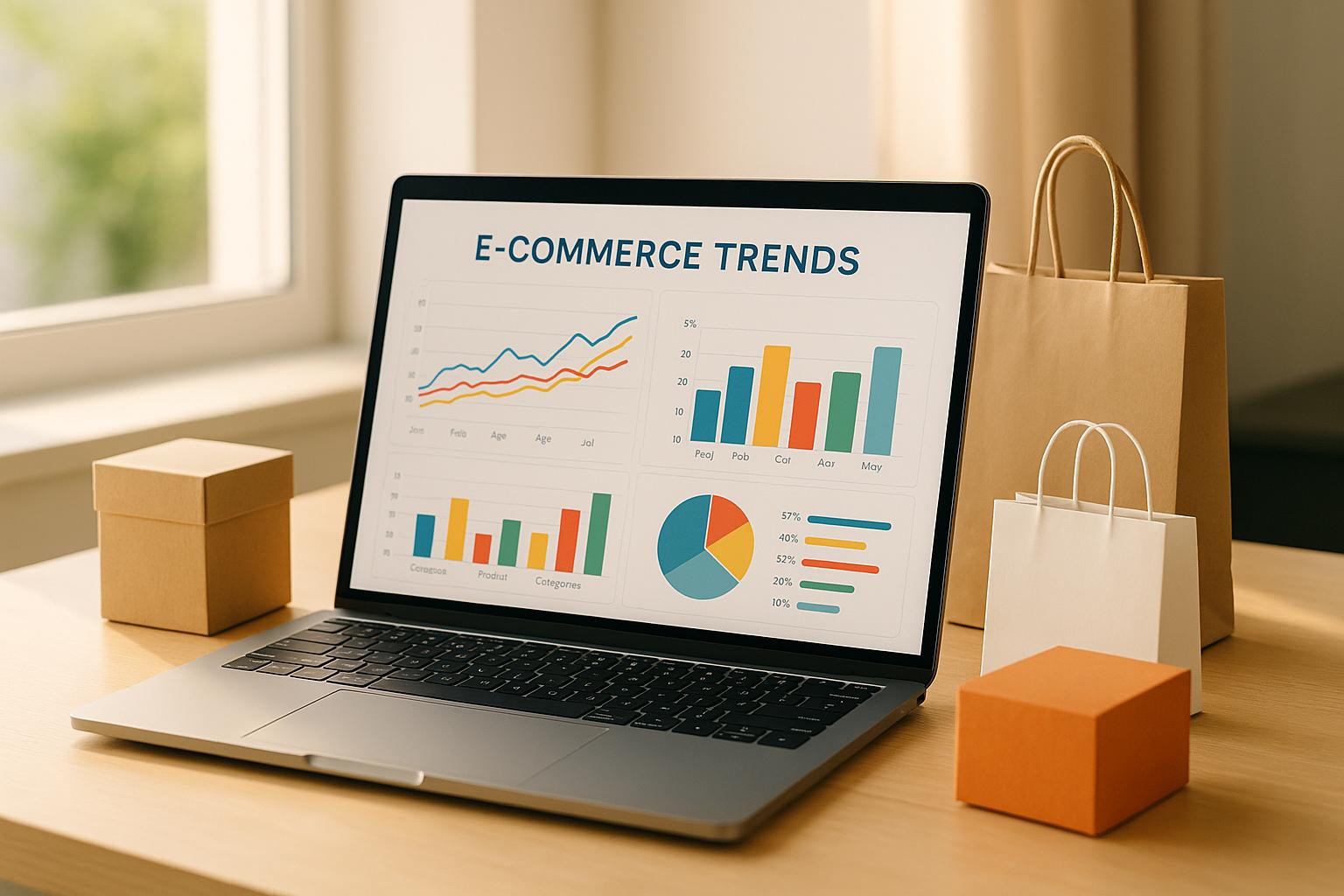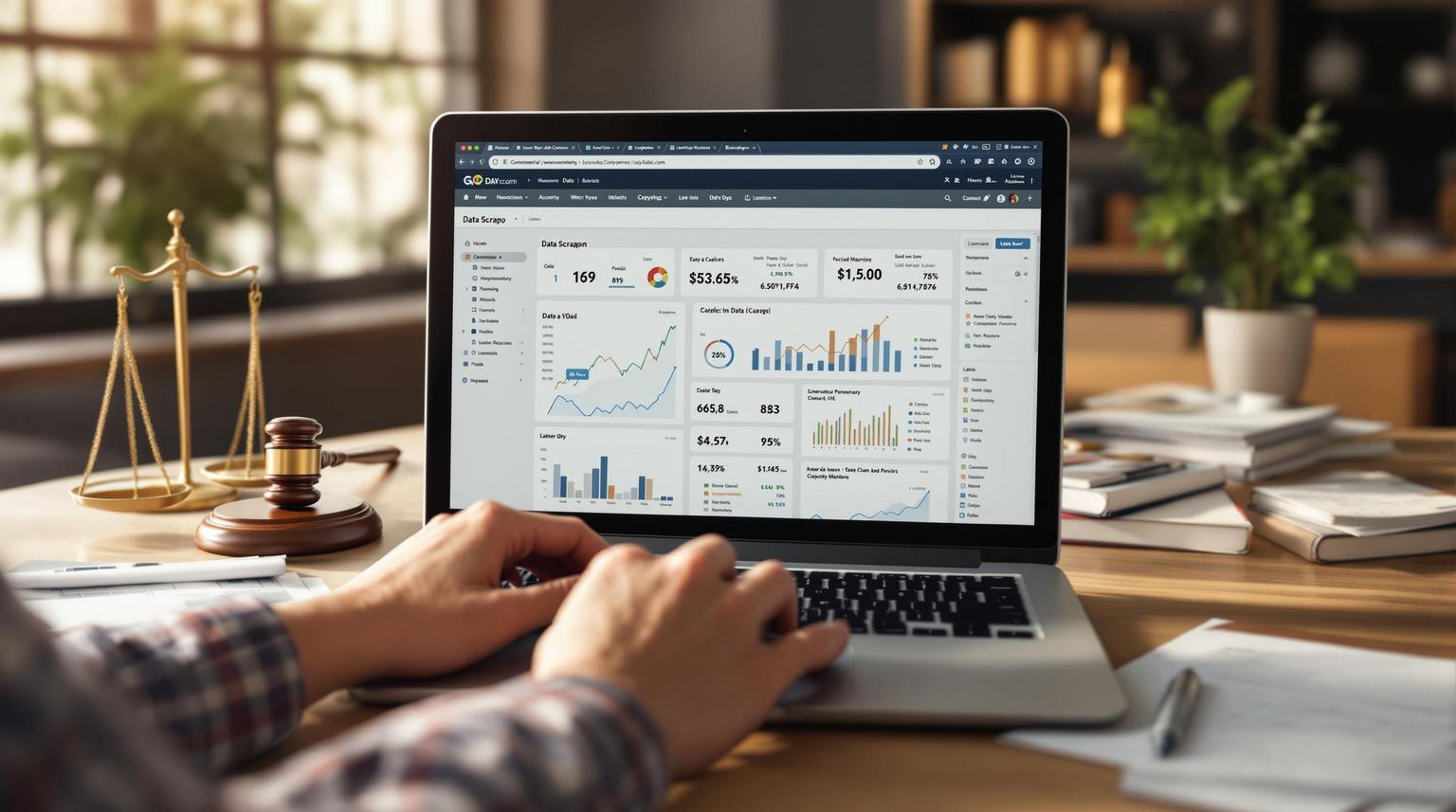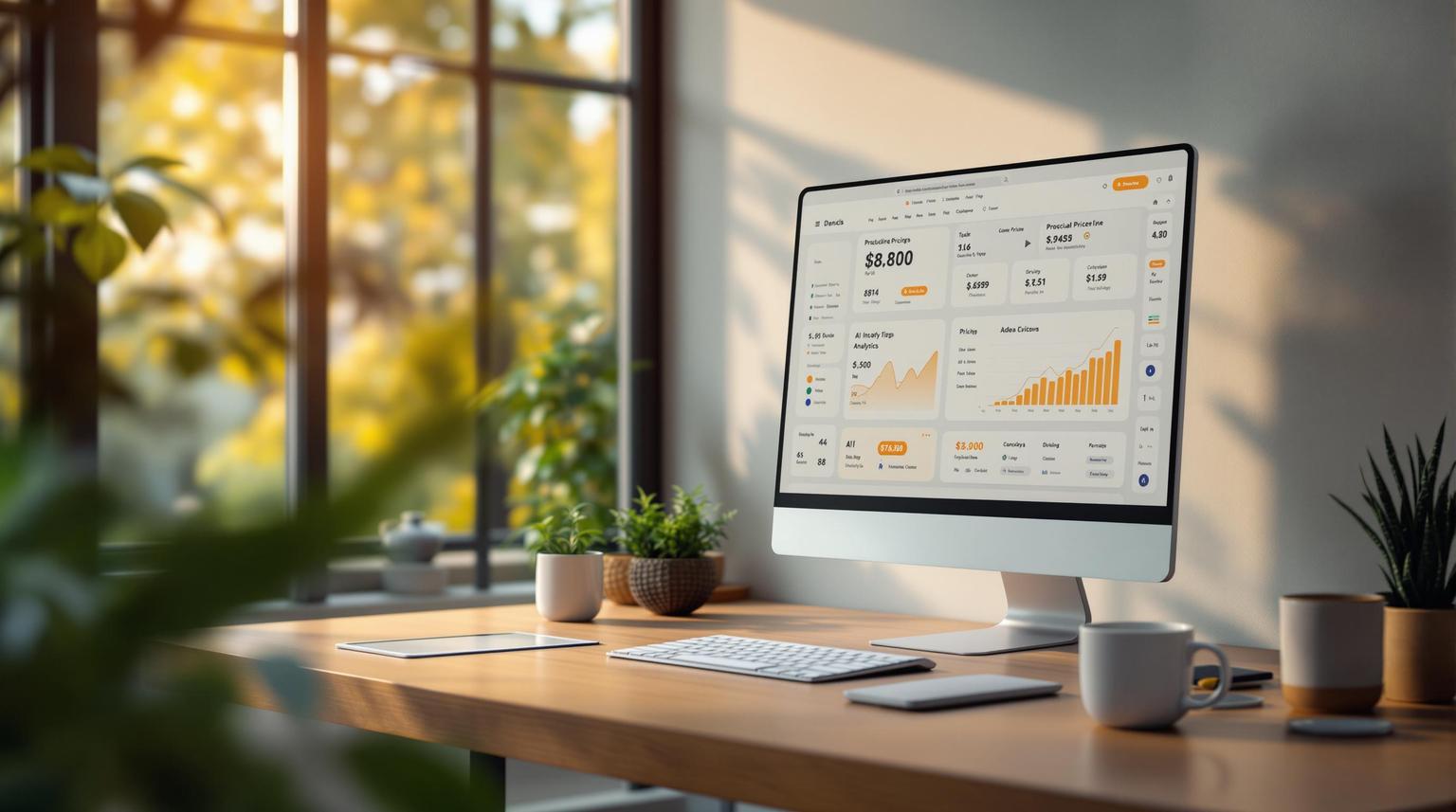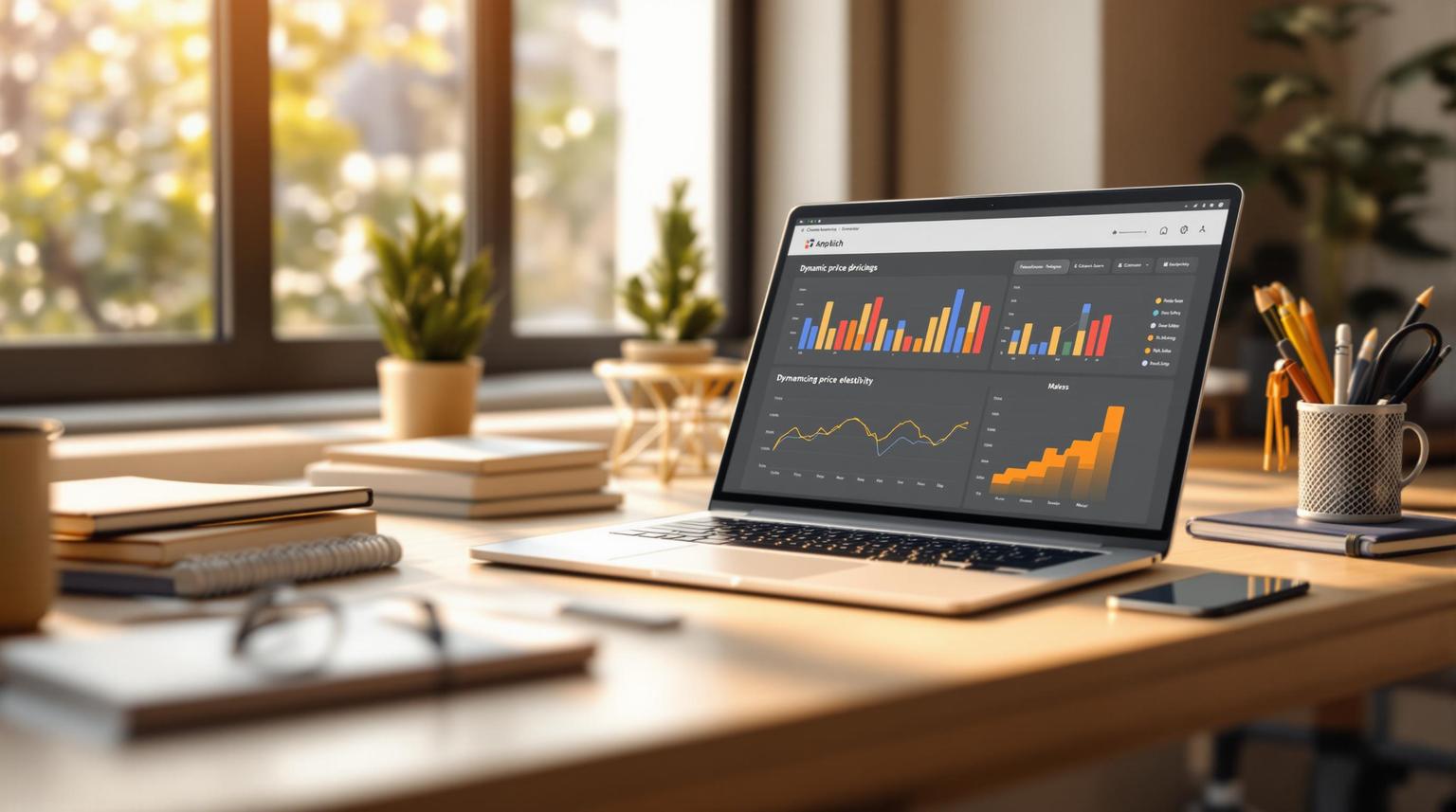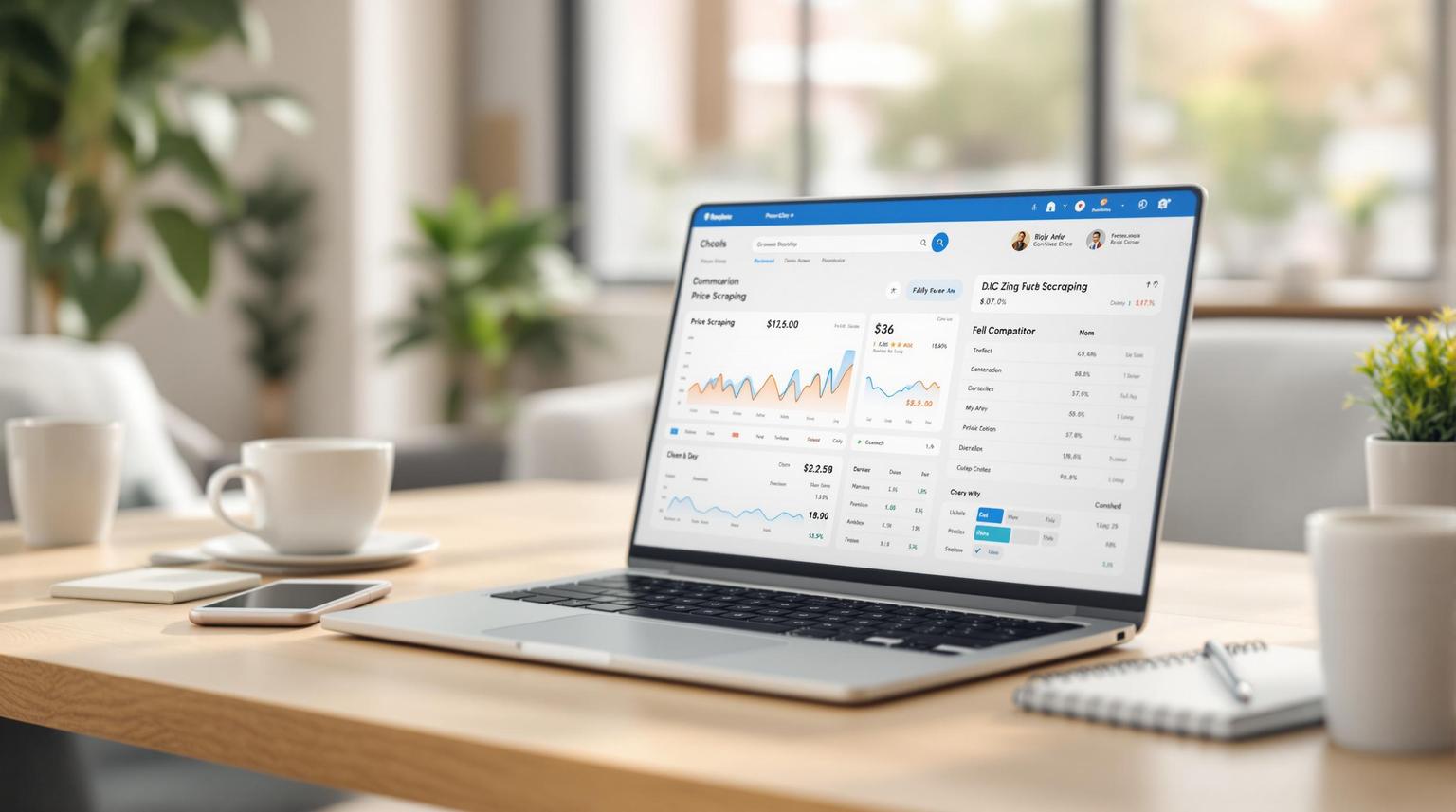Historical price data: Your secret weapon

February 10, 2025
Historical price data can transform your e-commerce strategy. Here's how businesses use it to succeed:
- Optimize Pricing: Adjust prices based on market trends, like holiday sales or competitor moves.
- Improve Inventory Planning: Forecast demand with up to 92% accuracy by analyzing past trends.
- Track Competitors: Monitor price changes and market positioning in real-time.
With tools like automated web scraping and machine learning, you can make data-driven decisions, reduce costs, and boost profits. This guide explains how to collect, analyze, and use historical price data effectively.
Main Uses of Historical Price Data
Setting Prices Based on Market Changes
Businesses use historical price data to fine-tune their pricing strategies, adapting to market shifts in near real-time. By analyzing past trends, companies can anticipate predictable changes. For example, holiday sales often see a 20% price drop, while peak demand periods typically justify a 15% price increase.
The success of dynamic pricing depends heavily on understanding price elasticity. Adjusting prices based on this metric allows businesses to create flexible pricing systems that outperform fixed approaches.
| Market Condition | Typical Price Adjustment | Expected Impact |
|---|---|---|
| Holiday Season | -20% | Volume increase |
Predicting Stock Needs
Historical price data also plays a key role in inventory forecasting. By combining time-series analysis with regression models, businesses achieve high levels of accuracy. One retailer, for instance, reached a 92% forecast accuracy by analyzing three years of data.
To improve inventory planning, many businesses follow these best practices:
- Study at least 12 months of data to account for seasonal trends.
- Give more weight to recent data (60%) while factoring in older patterns (40%).
- Keep a buffer stock of 10-15% above forecasted needs.
Here’s an example of how this approach works:
"By incorporating historical price data into our inventory planning, we reduced overstock by 32% while maintaining optimal stock levels for high-demand periods".
These methods ensure businesses are prepared for demand fluctuations without overstocking.
Tracking Competitor Prices
Tracking competitor pricing has become more efficient with modern price monitoring tools. These systems analyze key metrics such as:
- How often competitors adjust prices (usually three times a week for major players).
- Discount cycles, which often show a 15% reduction every six weeks.
- Overall market positioning compared to competitors.
With the ability to process over a million data points daily and respond in under 200 milliseconds, these tools provide real-time insights. This allows businesses to adjust prices quickly, stay competitive, and protect their profit margins. Such technologies make competitive intelligence accessible, reinforcing the idea that historical data helps level the playing field across industries.
Setting Up Price Data Collection
Price Data Tools: ShoppingScraper Overview

ShoppingScraper uses AI to track competitor pricing patterns, monitoring over 1,000 SKUs and spotting promotions weeks in advance. It offers enterprise-level tools for analyzing price trends effectively.
| Feature | Capability | Business Impact |
|---|---|---|
| Multi-platform Tracking | Integrates with Amazon, Shopify | Broader market visibility |
| Update Frequency | Hourly or daily updates | Timely market insights |
| Bulk Monitoring | Tracks 1,000+ SKUs at once | Scales with business needs |
| Error Rate | 0.2% data discrepancy | Ensures pricing accuracy |
Data Storage Methods
Storing collected price data properly is essential to keep its analytical value intact. Time-series databases are the go-to choice for managing historical price records. PostgreSQL and InfluxDB are especially effective, with InfluxDB excelling in handling large volumes of timestamped data. By using efficient storage formats, businesses can cut storage costs by 40% and speed up analysis.
A well-structured storage system should include:
- Product IDs
- Timestamps
- Price points
- Competitor or market tags
This setup helps preserve data quality for historical trend analysis.
Automated Web Scraping Setup
Building a reliable automated scraping system requires proper infrastructure. For monitoring 50,000 products daily, businesses typically need 5 to 10 dedicated servers. The system should include:
- Proxy networks
- Browser automation tools
- CAPTCHA-solving solutions with success rates between 85% and 92%
Performance Metrics: Advanced scraping systems allow for quick price adjustments while maintaining high data accuracy.
To ensure reliability, set up cross-validation checks to compare scraped prices with API data. Additionally, configure alerts for price changes exceeding 15% to catch anomalies. These measures create a dependable data pipeline for accurate trend analysis.
Price Data Analysis Methods
Price and Sales Analysis
With reliable historical data collected through automated systems, businesses can dive into three main types of analysis:
Advanced statistical techniques help isolate the effects of pricing from other variables while factoring in seasonal trends. Companies that excel in this area keep a close eye on metrics like the price elasticity index and conversion rates tied to profits.
| Analysis Type | Key Metrics | Business Impact |
|---|---|---|
| Price Elasticity | Elasticity Score < -1.5 | 23% revenue increase |
| Margin Analysis | Conversion rate changes | Identifies optimal prices |
| Competitor Parity | Price differential < 2% | - |
Price Prediction with Machine Learning
Machine learning transforms historical data into actionable forecasts, giving modern retailers an edge. These predictive models leverage competitor tracking systems to pinpoint the best pricing windows.
Sophisticated implementations often combine multiple methods for greater accuracy. For instance, an electronics retailer achieved 94% forecast accuracy by using LSTM networks trained on five years of daily pricing data.
Key elements for accurate price prediction include:
- Historical datasets spanning multiple market cycles
- Feature engineering with 30/60/90-day price trends
- Ensemble methods like ARIMA and Random Forest models
- Regular retraining to ensure models stay relevant
Price Change Monitoring Systems
Real-time price monitoring turns historical insights into a competitive advantage, enabling businesses to adapt quickly to market shifts. These systems rely on robust infrastructure to detect and respond to pricing changes almost instantly.
Successful monitoring systems typically deliver:
- Competitor response detection within 48 hours
- 42% fewer pricing errors via interactive dashboards
For example, AWS-powered solutions can achieve prediction errors of under 8%, allowing retailers - such as fashion brands - to adjust prices within just 15 minutes.
sbb-itb-65e392b
Connecting Price Data to Business Tools
Price Engine Setup
Once historical patterns are analyzed, the next step is integrating pricing engines into your operations. By using API-driven systems to connect historical price data, businesses can make price adjustments almost instantly in response to market changes.
Here’s a breakdown of the technical essentials for a successful price engine setup:
| Integration Component | Requirement | Impact |
|---|---|---|
| Data Format | JSON/CSV Structure | Smooth data processing |
| Update Frequency | Real-time API connectivity | Speeds up repricing by 92% |
| Error Handling | SKU validation | Keeps error rates below 0.5% |
Business Software Integration
Integrating historical price data with business systems requires attention to both technical details and operational needs. ERP systems, in particular, benefit significantly from this integration - 73% of enterprises now use direct API connections for pricing data.
A great example is a European electronics retailer that linked Dealavo's pricing data to their SAP ERP. This setup automated their repricing rules, saving 80 hours of manual work weekly and boosting profit margins by 4.2%. This case highlights how using historical data can sharpen a company’s competitive edge.
To achieve the best results, businesses should prioritize:
- Real-time Synchronization: Set up two-way data flows between pricing tools and business systems to ensure accuracy.
- CRM Integration: Use historical pricing trends to create personalized offers and improve customer engagement.
- ERP Coordination: Match price-demand data with inventory planning to automate stock alerts and maintain proper inventory levels.
When tracking performance, focus on key metrics like implementation speed (under 15 minutes per update) and accuracy (error rates below 0.5%) [10]. Early adopters have reported an average profit increase of 18% within just one quarter.
This integration lays the groundwork for further improvements through monitoring systems, as discussed earlier in the article.
Conclusion: Making the Most of Price Data
Historical price data plays a crucial role in e-commerce by supporting:
- Strategic pricing decisions
- Demand forecasting
- Competitor analysis
- Market trend insights
By implementing the storage methods covered earlier, companies that maintain archives spanning over three years have seen forecasting accuracy improve by 22%.
To use this data effectively, businesses should focus on:
- Conducting regular data quality checks
- Understanding market conditions
- Applying structured analysis techniques
"Maintain 7-year datasets to capture full economic cycles" - Retail Analytics Association Report 2024
New developments include AI-driven daily repricing, which can adjust prices up to 50 times a day, and blockchain for verifying supply chain data. The real value of historical price data lies in keeping datasets clean and complete while leveraging advanced analysis tools. Combining automated scraping tools, time-series databases, and regular pricing reviews creates a strong foundation for staying ahead in the competitive e-commerce landscape. This approach transforms historical price data from a simple archive into a powerful tool for driving success.
FAQs
What is historical pricing data?
Historical pricing data helps businesses make informed pricing decisions in e-commerce. It becomes actionable when paired with the right collection tools and analysis techniques.
Here are the main components and their impact:
| Component | Business Impact |
|---|---|
| Price Trends | Highlights seasonal patterns |
| Competitive Intelligence | Monitors market positioning |
| Demand Patterns | Pinpoints optimal pricing windows |
To conduct effective price analysis, businesses should focus on collecting:
- Time-stamped price records
- Market and competitor insights
- Sales trends and correlations
- Seasonal pricing indicators
Automated tools, like those mentioned in the "Setting Up Price Data Collection" section, process this data to support dynamic pricing strategies and inventory management discussed in this guide.
Related Blog Posts












